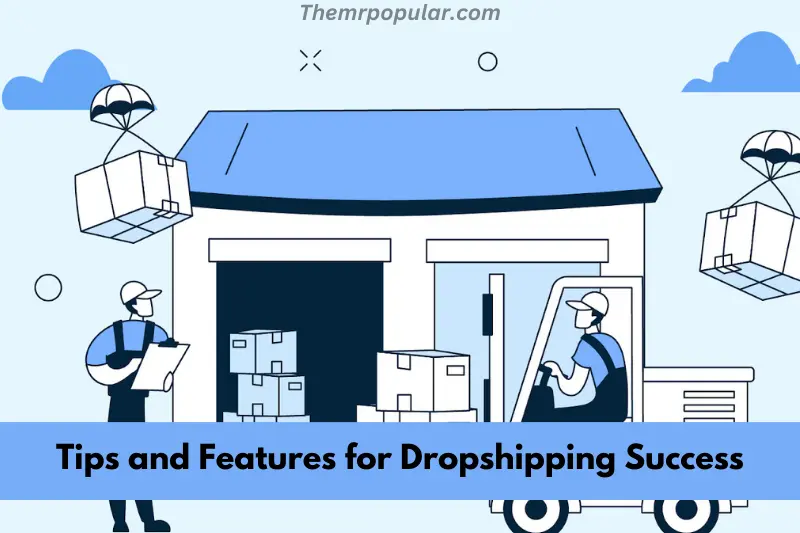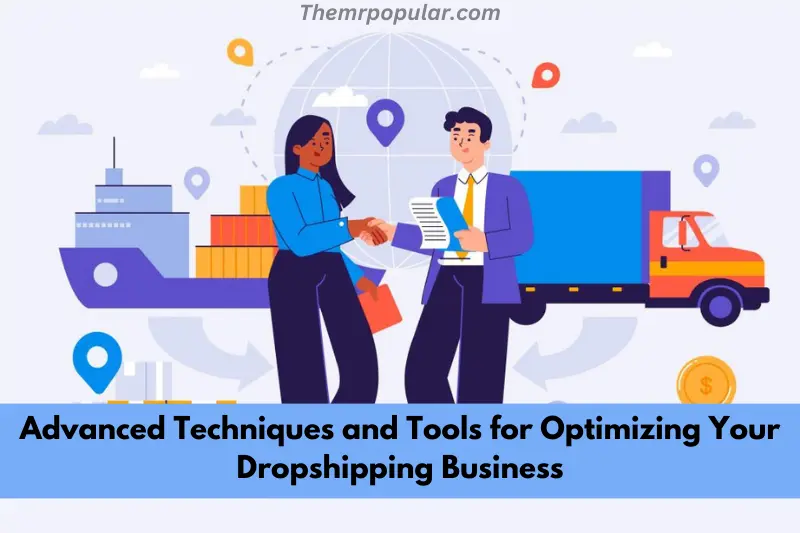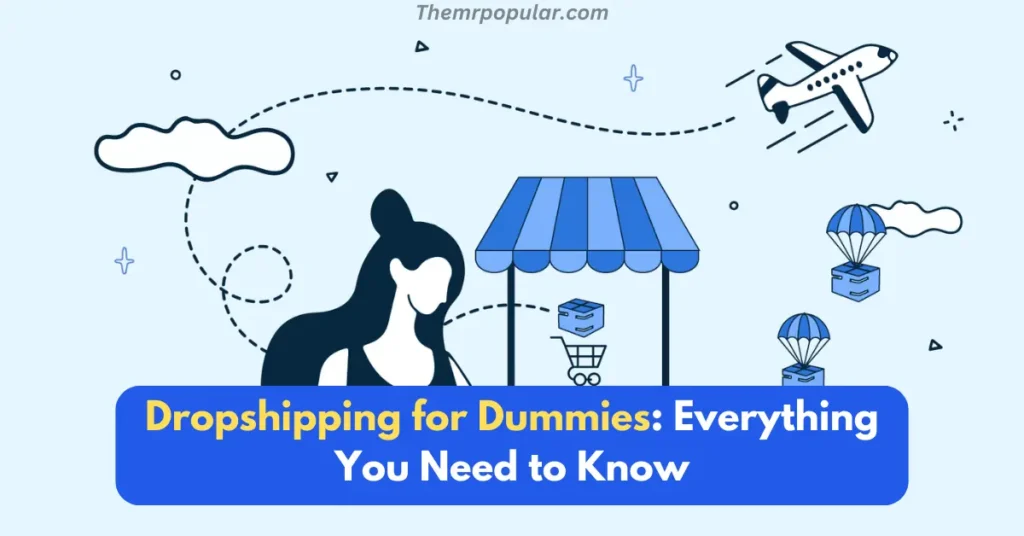Are you looking to start a business with minimal risk and investment? Dropshipping might be the perfect opportunity for you. If you’re new to the world of eCommerce, this article,
Dropshipping for Dummies, will guide you step by step through this business model, offering tips and strategies to help you succeed.
Whether you’re an aspiring entrepreneur or someone who wants to optimize an existing dropshipping business, this comprehensive guide has something for everyone.
By the end of this article, you’ll have a solid understanding of dropshipping, how it works, and how to build a profitable online store.
What is Dropshipping?
Understanding Dropshipping for Dummies
Dropshipping is a business model where the seller doesn’t keep products in stock. Instead, when a customer orders a product, the seller purchases it from a third-party supplier, who ships it directly to the customer.
As a result, the seller never handles the product directly. This model eliminates the need for warehousing and inventory management, making it an attractive option for many entrepreneurs.
Why Dropshipping?
Dropshipping is an appealing option for new business owners because it’s low-risk and relatively easy to start. You don’t need significant upfront investment, which makes it an excellent option for those on a budget.
In fact, many successful businesses have been built on the dropshipping model. It allows for flexibility, scalability, and a wide range of product choices without the burden of traditional retail overhead.
The Context and Significance of Dropshipping
Why It’s Becoming More Popular
Over the past decade, the popularity of dropshipping has surged. According to a report by Grand View Research, the global dropshipping market size was valued at over USD 197 billion in 2022 and is expected to grow significantly in the coming years.
This growth is due to the increase in online shopping and the ease of setting up an eCommerce business.
Real-world examples of successful dropshipping businesses show the potential of this model. For instance, companies like Oberlo and Shopify have built platforms that help people easily set up dropshipping businesses.
As eCommerce continues to boom, there’s never been a better time to get started with dropshipping.
Tips and Features for Dropshipping Success

Tip 1: Choose the Right Niche
One of the most important steps in starting a successful dropshipping business is selecting a niche. Your niche will determine your target audience, the products you sell, and your marketing strategy. To find the right niche for you, consider the following:
- Choose a product that interests you and has a demand.
- Research trends using tools like Google Trends or social media platforms.
- Look for niches with low competition but steady demand.
Dropshipping for Dummies Tip: Focus on a niche where you can stand out with unique selling points (USPs), such as high-quality customer service or fast shipping.
Tip 2: Find Reliable Suppliers
A crucial part of dropshipping is finding suppliers you can trust. Since you don’t handle the products, the quality and reliability of your suppliers directly impact your customer satisfaction.
- Look for suppliers with fast shipping times.
- Read reviews and ask for references to ensure reliability.
- Consider using platforms like AliExpress, SaleHoo, or Spocket to connect with vetted suppliers.
Dropshipping for Dummies Tip: Build strong relationships with your suppliers to ensure smooth operations and to negotiate better rates as you grow.
Tip 3: Build a User-Friendly Website
A professional, easy-to-navigate website is key to converting visitors into customers. Ensure that your website:
- Has a clean, attractive design.
- Loads quickly and is mobile-friendly.
- Provides clear calls to action, such as “Add to Cart” and “Checkout.”
Dropshipping for Dummies Tip: Use platforms like Shopify or WooCommerce to set up a dropshipping-friendly website with minimal technical expertise.
Step-by-Step Guide to Starting a Dropshipping Business
Now that you understand the basics, let’s dive into the steps to start your dropshipping business.
Step 1: Choose a Profitable Product Niche
- Research trending products and target markets.
- Evaluate the demand and competition.
- Narrow down your niche to focus on specific, in-demand products.
Step 2: Find a Supplier
- Search for dropshipping suppliers online.
- Compare shipping times, pricing, and reviews.
- Start small and test multiple suppliers to find the best fit.
Step 3: Set Up an Online Store
- Choose an eCommerce platform like Shopify or WooCommerce.
- Customize your store with a user-friendly design and product pages.
- Integrate payment gateways and set up shipping options.
Step 4: Market Your Store
- Utilize social media platforms like Instagram, Facebook, and Pinterest.
- Implement paid ads (e.g., Facebook Ads or Google Ads) to attract targeted traffic.
- Create valuable content, such as blog posts or YouTube videos, to drive organic traffic.
Step 5: Manage Orders and Customer Service
- Monitor orders through your eCommerce platform.
- Communicate with customers promptly to ensure a positive experience.
- Address customer concerns quickly to build trust and loyalty.
Read More:
A Complete Guide to DC Autopilot Dropshipping
Ultimate Guide to Using Dropshipping.io for Your Business
Ultimate Guide to Corellian MT Dropshipping
Best Cheapest Website AI Builder For Dropshipping Small Business
Advanced Techniques and Tools for Optimizing Your Dropshipping Business

While the basics are essential, there are advanced techniques that can help you stand out in a crowded market:
Tool 1: Use Automation Tools
- Oberlo – Automates product imports and order fulfillment.
- DSers – Helps with supplier management and order processing.
- Zapier – Integrates with your store to automate routine tasks.
Tool 2: Implement Email Marketing
- Use Mailchimp or Klaviyo to build email lists and send personalized offers.
- Segment your email list based on customer behavior for targeted campaigns.
Tool 3: Optimize for SEO
- Use tools like SEMrush or Ahrefs to identify keywords and optimize your content.
- Optimize product descriptions, blog posts, and meta tags for search engines.
Practical Insights for Beginners
Starting a dropshipping business can seem daunting, but with the right mindset and tools, it can be incredibly rewarding. Here are a few beginner-friendly tips to get you started:
- Start with a small product range to test the waters.
- Keep overhead costs low by focusing on digital marketing and free tools in the beginning.
- Use affordable platforms like Shopify’s basic plan or WooCommerce on WordPress to keep startup costs down.
Related Opportunities in Dropshipping
If you’re serious about growing your dropshipping business, there are additional opportunities to explore:
- Private Labeling: Sell custom-branded products with your own logo.
- International Shipping: Expand your market by offering worldwide shipping options.
- Affiliate Marketing: Partner with complementary brands to promote each other’s products.
Do’s & Don’ts in Dropshipping
Do’s:
- Focus on customer service and communication.
- Regularly analyze performance and optimize your marketing campaigns.
- Continuously test and refine your product offerings.
Don’ts:
- Don’t neglect the importance of a fast, user-friendly website.
- Don’t rely solely on one supplier—have backup options.
- Avoid setting unrealistic profit margins that could hurt your pricing strategy.
Real-Life Examples of Dropshipping Success
Many entrepreneurs have built thriving businesses using the dropshipping model. One such example is Oberlo, which helped countless businesses get off the ground by connecting them with trusted suppliers.
Another success story is Beardbrand, a company that went from a small dropshipping store to a multi-million dollar business by focusing on a specific niche and using targeted marketing strategies.
Conclusion
In conclusion, dropshipping is an accessible and low-risk way to start a business with minimal upfront investment. By following the tips, strategies, and steps outlined in this Dropshipping for Dummies guide, you’ll be on your way to building a successful online store.
Don’t forget to test different strategies, optimize continuously, and stay dedicated to providing excellent customer service. The dropshipping business model offers incredible opportunities—seize them, and you could be well on your way to entrepreneurial success.
FAQ Section
What is dropshipping?
Dropshipping is a retail fulfillment method where the store owner doesn’t keep products in stock. Instead, when a product is sold, it is purchased from a third-party supplier who ships it directly to the customer.
Is dropshipping profitable?
Yes, dropshipping can be profitable, especially if you select the right niche, find reliable suppliers, and market effectively.
How much do I need to start dropshipping?
You can start dropshipping with a minimal budget. The most significant initial expenses are setting up your website and advertising.
Can I run a dropshipping business from anywhere?
Yes, dropshipping is location-independent. As long as you have an internet connection, you can run your business from anywhere.
What are the most important tools for dropshipping?
Key tools include platforms like Shopify, supplier directories like AliExpress, and automation tools like Oberlo.
Do I need inventory for dropshipping?
No, with dropshipping, you don’t need to hold inventory. Your supplier handles all the stock and shipping.
How do I find reliable suppliers?
Research suppliers thoroughly, read reviews, and consider using platforms like SaleHoo or Spocket to find vetted suppliers.
What is the best marketing strategy for dropshipping?
Focus on digital marketing strategies like social media ads, influencer marketing, and SEO.
Can dropshipping be automated?
Yes, many aspects of dropshipping can be automated, such as product imports, order fulfillment, and email marketing.
What are the common mistakes in dropshipping?
Common mistakes include neglecting customer service, choosing low-quality suppliers, and failing to optimize the website for conversions.
